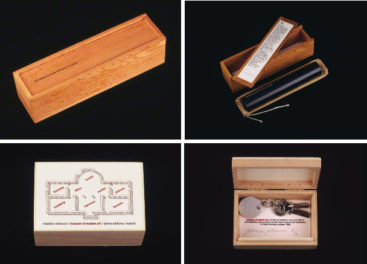
Participants in the 2010-2011 course on the Conservation and Management of Mosaics at Archaeological Sites, in Rome, Italy.
The Getty Conservation Institute recently completed the first training course for MOSAIKON, an ambitious collaboration dedicated to improving the conservation and maintenance of ancient mosaics in the Mediterranean region.
Begun in 2008, MOSAIKON is a partnership between the Conservation Institute, the Getty Foundation, ICCROM (the International Center for the Study of the Preservation and Restoration of Cultural Property), and the International Committee for the Conservation of Mosaics (ICCM).
The recently completed course, Conservation and Management of Mosaics at Archaeological Sites, was a collaboration between the Conservation Institute and ICCROM’s ATHAR program, which focuses on the cultural heritage of the Arab region.
Designed as a three-part learning experience, the course launched with an intensive three-week workshop in May 2010 at the World Heritage site of Tyre in southern Lebanon. It was attended by professionals who oversee the care and management of archaeological sites with in situ mosaics (mosaics still in place in their original archaeological locations, and not removed to museums).
This workshop was followed by an eight-month period of practical work that allowed the participants to apply what they had learned at the workshop to their own sites. These practical projects ranged from developing a survey and database of all in situ mosaics in Syria, to conducting conservation interventions on a historically significant mosaic at the site of Tyre. Instructors served as mentors during this process, offering additional information and guidance.
In September, we held the third phase of the course—a final meeting of the participants and instructors—at ICCROM in Rome.
During the week, all fourteen of the participants— who come from Syria, Lebanon, Tunisia, Morocco, and Egypt— presented and discussed their work, highlighting both the progress they had made at their sites and potential areas of future work and collaboration.
Our program for the week also included visits to mosaic sites in Rome, as well as a two-day site visit to Herculaneum, where we continued the training through site exercises and discussions with the Herculaneum Conservation Project, a private-public partnership charged with the conservation and management of the site. At the end of the week, each participant earned a certificate acknowledging their commitment to the long and demanding course.


MOSAIKON course participants at the site of Herculaneum, Italy, preparing and presenting a site exercise on planning priority conservation interventions.
A month later, the participants in the workshop had the opportunity to meet again for the 11th Conference of the International Committee for the Conservation of Mosaics (ICCM) held in Meknes, Morocco, in October. ICCM is the major professional organization relating to the study and preservation of mosaics worldwide and serves as the nucleus for related professional activities. The participants’ attendance at the conference was facilitated by a grant from the Getty Foundation. The same grant will also provide a number of the participants with the support needed to continue the work they had began at their sites during the course.
By providing ongoing training, networking opportunities, and resources, the MOSAIKON partners will continue to work toward improved conservation and management of archaeological mosaics, unique cultural treasures of the Mediterranean region.




Hello and thank you for such a nice website and work you are doing. How can I get involved in learning about mosaic conservation? I have a background in archaeology and am an accomplished mosaic artist as well as archaeological illustrator. Any information or ideas would be much appreciated. Thank you very much.
Sincerely Judie